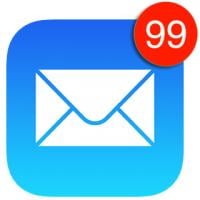How to Slim Down Your Bloated Email Inbox

According to Adobe’s recent consumer email survey, Americans spend an average of 5.4 hours every weekday checking their email. Now, that isn't all during the typical eight-hour workday—survey participants admitted to checking email while talking on the phone, working out, attending formal ceremonies, and even while driving. Still, do that many people really spend nearly a quarter of their day checking their inboxes?
Maybe we can cut down on that time by removing email bloat and following that classic adage for efficiency: Work smarter, not harder.
First, try revamping your routine. Charles Duhigg, the author of Smarter, Faster, Better, suggests making a plan for dealing with your email before you even get to work. He says you should spend your commute thinking through your priorities for the day, then, based off that, setting yourself a start and end time for your morning email check. Determining a realistic time goal will help prevent the phenomenon where you get to your desk, plan on doing a "quick" scan for messages, and then the next thing you know, it's lunchtime.
To help keep yourself within your predetermined time for checking email first thing in the morning, prioritize your inbox so you address the important stuff first. This would include tasks that need an immediate response that only you can give, high-priority projects, and emails from your manager.
One strategy is to click "reply" to each of these urgent messages as you encounter them, but don't type anything yet; only create the message. This way you can continue filtering through the rest of your inbox, deleting emails you don't need and leaving the ones that can stand to wait, so when you have time to look at your drafts folder, you know it contains only the high-priority emails. it's like having a built-in to-do list.
For the remaining emails, Duhigg suggests creating a folder for messages that you don’t want to deal with right now but also don't yet want to delete. “You’ll probably discover that most of them never really needed your attention,” he said. If this method makes you nervous, you can always check the folder the next day and reevaluate.
If you simply have too much clutter in your inbox and you've already unsubscribed from every list you can, try creating a "Temporary" folder and setting up auto-filters for it. Your email client will automatically add the emails you need only for a short time, such as receipts, paystubs, shipping or delivery notices, and appointment reminders, so you can check the folder periodically and delete anything that's no longer useful.
And if you find yourself wasting a lot of time writing follow-up emails when people don't respond to your initial request, there's one last thing you can try: changing your email signature. Email scheduling app Boomerang analyzed more than 350,000 email threads to see which closings got the best response rates, and emails signed "Thanks in advance," "Thanks," and "Thank you" got significantly more responses than emails ending with other popular closings. So if you want to cut down on the time you spend writing follow-up emails to your follow-up emails, a little gratitude may help.

